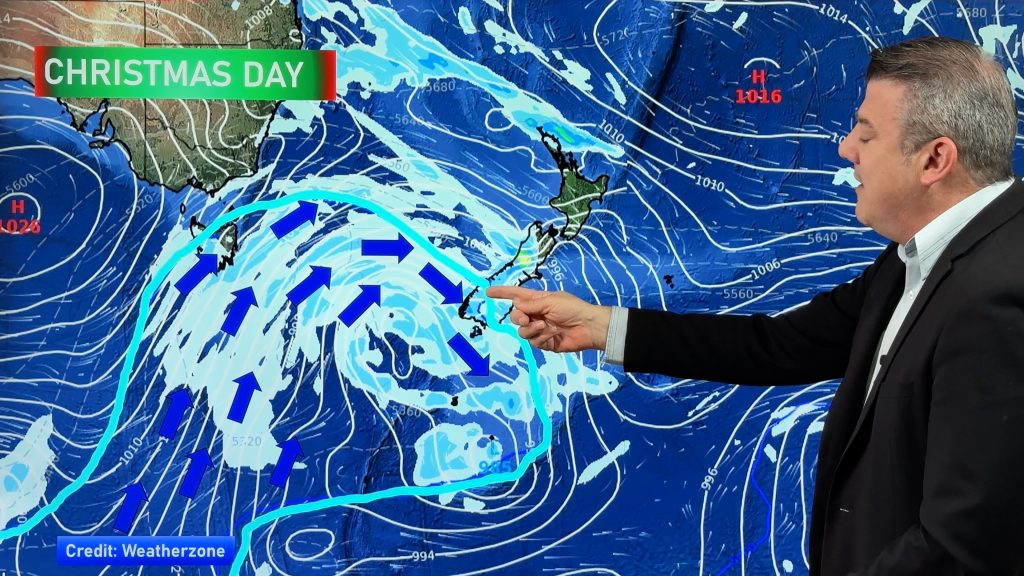
> From the WeatherWatch archives
The strongest El Niño in 18 years continues to intensify and is likely to be one of the three strongest on record by the time it peaks this winter, according to a monthly outlook from NOAA released Thursday morning.
This El Niño is then expected to weaken in the spring, disappearing altogether by late spring or early summer 2016, the November El Niño diagnostic discussion from NOAA’s Climate Prediction Center said.
El Niño is an anomalous, yet periodic, warming of the central and eastern equatorial Pacific Ocean. For reasons still not well understood, every two to seven years, this patch of ocean warms for six to 18 months.
The central, northeast and eastern Pacific show warmer-than-average water temperatures especially over the equatorial Pacific. Cool anomalies are seen in parts of the northwestern Pacific Ocean near Japan.
This warming of equatorial Pacific water influences the atmospheric pattern from the western Pacific Ocean, including Australia and Indonesia, to North and South America, the Atlantic Ocean, even parts of Europe and Africa.
Precipitation and temperature impacts in the U.S. from a strong El Niño are typically most noticeable during the colder months, from late fall through winter. We have more on what those impacts are later in this article.
Nino 4 highest weekly anomaly (+1.7C) and warmest absolute temp for any Nino region (30.3C) on record (since 1990). pic.twitter.com/esGIR9g0Z0
— Philip Klotzbach (@philklotzbach) November 9, 2015
From October into early November, sea-surface temperatures (SSTs) near the equator in the central and eastern Pacific have continued to warm.
In fact, the early November weekly SST anomalies in the so-called Niño 3.4 region (between 90 degrees W and 160 degrees E longitude and 5 degrees north/south latitude) equaled the peak weekly value (+2.8 degrees Celsius) on Nov. 26, 1997 during the 1997-1998 El Niño.
Tropical meteorologist Dr. Phil Klotzbach said that is being paced by the warmest sea-surface temperatures over the past 25 years in the equatorial central Pacific Ocean, well south of Hawaii.
For historical purposes, El Niños, and their opposite La Niñas, are ranked according to a three-month running mean SST anomaly, known as the Oceanic Niño Index (ONI).
Based on the latest three-month (August-October) ONI, the 2015 El Niño is pacing ahead of the 1982-1983 event, but still behind the pace of the strongest El Niño of record in 1997-1998.

A ‘Sea Change’ in Atmospheric Circulation
Typically, easterly trade winds near the equator pile warm water into the western Pacific Ocean. Conversely, the resultant upwelling, or upward movement of deep, cold ocean water keeps the eastern and central Pacific Ocean cooler.
Thunderstorms require at least some degree of warm, humid air near the surface, so they’re more numerous and persistent over the western Pacific warm pool, and much less so in the eastern equatorial Pacific.
During an El Niño, these trade winds weaken, and may at times reverse from west to east. Warmer western Pacific water then slowly sloshes back toward the central, even eastern Pacific Ocean in what’s known as an equatorial-trapped Kelvin wave.
Therefore, the most persistent thunderstorms will shift from the western to the eastern and central Pacific Ocean in an El Niño.
This trade wind reversal and the resulting reorientation of thunderstorms changes the atmospheric circulation not just over this swath of the equatorial Pacific Ocean, but can also have far-reaching impacts on the atmospheric circulation.
– Weather.com
Comments
Before you add a new comment, take note this story was published on 15 Nov 2015.




Add new comment